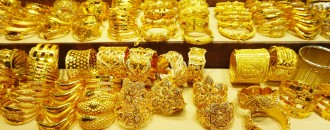
Global gold demand declines 18% during Q1 of 2017: WGC
The Dollar Business Bureau
The global demand for gold fell by 18% to 1,034 tonnes during the January-March period of 2017, primarily due to fewer inflows into the exchange-traded funds (ETFs) and slow central bank demand, as per the World Gold Council (WGC).
The overall global demand for gold stood at 1,262 tonnes in the first quarter of 2016, as per the latest report on Gold Demand Trends by WGC.
“Demand is down but that is largely because Q1 last year was exceptionally high. Although we did not see the record-breaking surges in ETF inflows experienced in Q1 2016, we have seen good inflows nonetheless this quarter, with strong interest from European investors ahead of the Dutch and French elections,” said Alistair Hewitt, Head of Market Intelligence at WGC.
The slow central bank demand in the first quarter this year contributed to the decline with addition of 76 tonnes to the reserves compared to 104 tonnes in the same period last year.
“The purchasing programme in China was paused during the three-month period as the country’s foreign exchange (forex) reserves continue to be under pressure,” the report said.
On the other hand, investment in bar and coin was healthy and increased 9% at 290 tonnes, while the demand firmed a little in technology as well as jewellery sector.
“The demand in retail investment is also strong, grew 9% year-on-year, at more than $11 billion in the quarter. This was led by China with demand for bar and coin rising 30%, reaching beyond 100 tonnes for the fourth time, driven by the concerns over potential weakness in currency and a frothiness in property market,” said Hewitt.
The demand for jewellery in the January-March quarter was slightly up at 481 tonnes compared to the same quarter in 2016.
“The main reason for the marginal increase in jewellery demand is gains in India. However, the demand continues to be relatively low in historical context, 18% below the quarterly average of five years,” the report said.
“Jewellery demand is still in the doldrums, although there are signs of improvement, especially from India where the gradual remonetisation of the economy is supporting the jewellery market,” Hewitt said.
Meanwhile, the overall supply fell by 12% to reach at 1,032 tonnes in the said quarter, compared to 1,175 tonnes in the same period last year, the report said.
The report further said that mine output of 764 tonne was slightly changed from the first quarter of 2016 (of 768 tonne), and it is in line with the prediction that the production will remain largely steady before declining.






 to success.
to success.